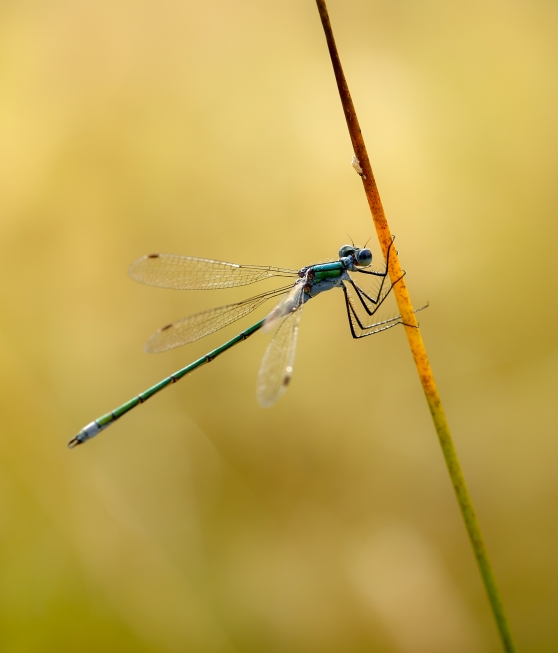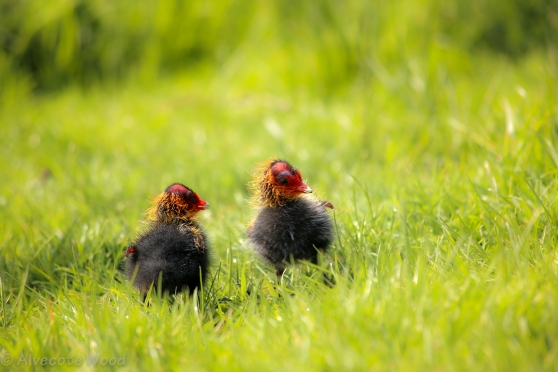
Mating pair of common blue butterflies – backlit
I love photographing insects. Not just the showy ones, but the small and insignificant ones too. Butterflies, dragonflies, moths, damselflies, overflies, ladybirds, bugs, flies – all of them are interesting and challenging.
Equipment
Actually, I use very simple equipment, but insect photography IS one of those specialist areas where it does help to have the right equipment – a digital SLR and a macro lens. I have my SLR (Canon EOS5D Mark III), and a few lenses, of which my favourite is the 100mm f2.8L IS Macro. I also have a 70-300mm f4 L IS zoom and a 300mm f2.8L IS prime lens. The 300mm is big and heavy, and I don’t use it often. I stick to the first two lenses which I can carry easily. The 100mm lens is absolutely without compare in terms of image quality, but does require you to get pretty close to your subject if you want the insect to appear a decent size. It is also f2.8, which gives the opportunity to blur out the background if you wish. The 300mm zoom or prime have the advantage of a longer reach, which is useful for shots over water, or where the insects are easily-disturbed. The disadvantage is that the longer reach is no advantage if there is undergrowth in the way, and there often is. It is also harder to hand-hold.
A lot of people use a tripod or monopod to reduce camera shake. I don’t do this for three reasons. First, I have a serious illness (cystic fibrosis) and my breathing isn’t good. Carrying a tripod and monopod on top of the heavy camera and spare lens really tests my breathing, so I tend to avoid it. Second, I find tripods or monopods tend to restrict your viewpoint. You set it up and then can’t be bothered to adjust, particularly if you are close to the insects, which means that you aren’t as flexible with your viewpoint, and consequently with your background, lighting and everything else, as you can be if you hand hold. Finally, the problem with insects is that they are often moving, or what they are perched on is moving, and a tripod doesn’t help with this at all.
The other thing worth considering is a circular polarising filter – this allows you to make adjustable changes to the way in which reflections are handled in your pictures. Particularly when photographing over water, it can be nice both to show reflections and also minimise them, for example when you are trying to get a picture of an ovipositing female dragonfly.

Southern hawker dragonfly by our pond
Finally, it is worth learning how to use the non-auto features on your camera: aperture-priority to control depth of field in your pictures, shutter-speed priority to freeze motion for in-flight shots, and manual focus to get focus on exactly the right plane, exactly on the right part of the insect – usually the eyes, but sometimes the root of the wings or other parts.
Learn how to approach
The first difficulty with insects is getting close to them (apart from mosquitoes, which like to get close to you all the time!). They have good eyesight, and are very sensitive to motion, not to mention sound, vibration and smell. You can’t just go crashing through the grass, waving your camera around, and hope to get a decent photo, or indeed, get anywhere near them. I find the key is to move very slowly, no matter how tempting it can be to get in quickly before the insect goes. It might disappear anyway, but is much more likely to disappear if you rush. It is useful to practice the Tai-Chi way of walking which is quiet and smooth. Also, use the wind, if there is any and time your movements to coincide with gusts of wind. It is also worth learning how to squat or kneel very slowly, quietly and smoothly – doing very slow squats isn’t easy, particularly with a heavy camera. It is worth practising this without taking photos, until you can do it well.
Remember, they can smell you too – so it might be worth remembering this when preparing to go out and avoiding things like smelly hair dressing, perfume, deodorant and of course, insect-repellent.
Viewpoint and Background
Once you have made the effort to get close to the insect, it is tempting to blast off a photo and be happy with that. However you really do need to think more about it than that. What viewpoint do you want? Which bit of the insect do you want to feature? Do you want to see it from behind, from the side, head-on, from below, above or on the level with the insect? Do you want detail on the wings, or do you want the light shining through the wings? This should be in your thoughts as you approach, so that you approach from the right direction, and get yourself on the right level to take the photo.

Emerald Damselfly – dark damselfly, bright background
Likewise, how do you want the background to appear? Do you want it to be a blur, or do you want to show detail? Do you want it to be dark or light, a complimentary colour or the same colour? When you are close to a subject, a very slight adjustment in your position can make a large difference to the background. Likewise, it is easier to blur the background when you are close than when further away (for any given aperture – it is down to distance ratio between subject, lens and sensor). A very slight shift in your position can give the picture a totally different feel, if the subject allows it.

Common blue butterfly in meadow
Lighting
Full-on front lighting is great to show details of the markings and structure of the insect, but try experimenting with other types of lighting including side and back-lighting, because these can give a very different feel, although getting the exposure right is more challenging. Again, worth thinking of this before you approach the insect, so you can get set up in the right position.

Common darter dragonfly on a cane
Exposure
Getting exposure right can be challenging. You may have a dark insect with a bright background such as sky, grass or water, or a pale insect against a dark background such as dark leaves or water, as well as challenging lighting, such as side or back-lighting. It is worth becoming familiar with the exposure-compensation button on your camera, and learning to use it without moving your face from the camera. This will allow you not only to make a best guess as to how much compensation is needed, but also to manually bracket the exposure so you get some insurance against having made and incorrect decision. This is something that comes with practice, and is well worth it. As a guide, if it is a dark insect on a light background, I usually over-expose by 2/3 a stop and then adjust – for the converse, I underexpose by 1/3 or 2/3 stop then adjust. You can also adjust exposure to give a particular feel to a picture – over-exposed ethereal, or under-exposed and dark and menacing.

Banded Demoiselle – challenging exposure!
Some insects are surprisingly difficult to judge: butterflies, for example, have very iridescent wings, and it can be hard to judge the exposure. Common blues, for example, often need a surprising amount of under-exposure to get the colours correct, because of the reflections from their wing. Ladybirds, also, tend to look very washed-out at correct exposure because of the reflective nature of their elytra (wing cases).

Male common blue showing iridescence
Learn to see the picture in your head
Finally, it is very helpful to practice seeing in your head what the final picture will look like, after you have taken it and processed it. Visualise what you want to see. What details do you want to see? How do you want the colours to look – bright, subdued, deep and rich, pale and ethereal? How do you want the balance of light and shade to look in the picture? How do you want the background to look – detailed or blurred, bright or dark? Which bit of the insect do you want the viewer to focus on? How can you best compose the image so the viewer sees it through your eyes? Is there anything you can do to draw attention to what interests you about the insect, or the setting in which it is placed? How do you want the viewer to feel? How do YOU feel? Can you convey that feeling in your imagery?

Common darter on willow leaf, sheltering from the rain
You may disagree
This is my approach. Many will disagree, and many will have their own, different, and equally-successful approach. It works for me. In 2014, a portfolio of my insect work reached the final round of Wildlife Photographer of the Year – not something to be sneezed-at, even though I didn’t win. I hope it has given you something to think about, and provides some guidance for beginners. Whatever you do, I hope you enjoy looking closely at insects, and getting into their weird and wonderful world.

Common darter in oak tree

































































































